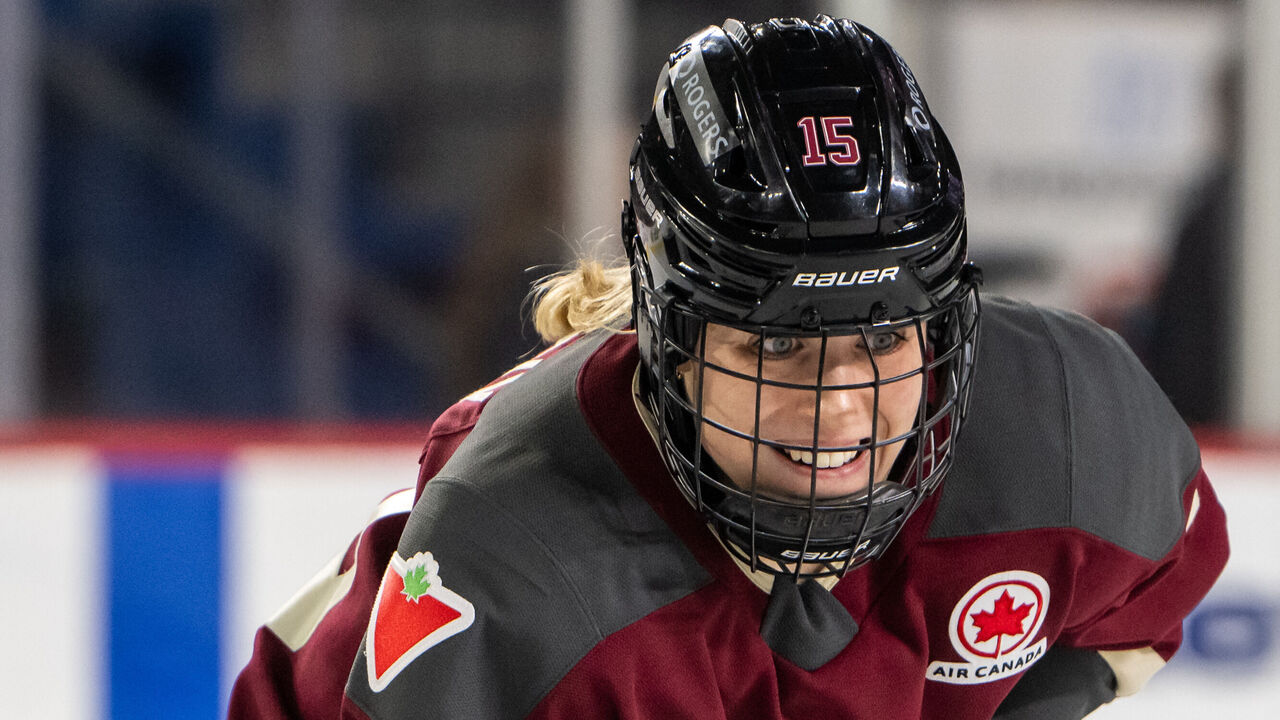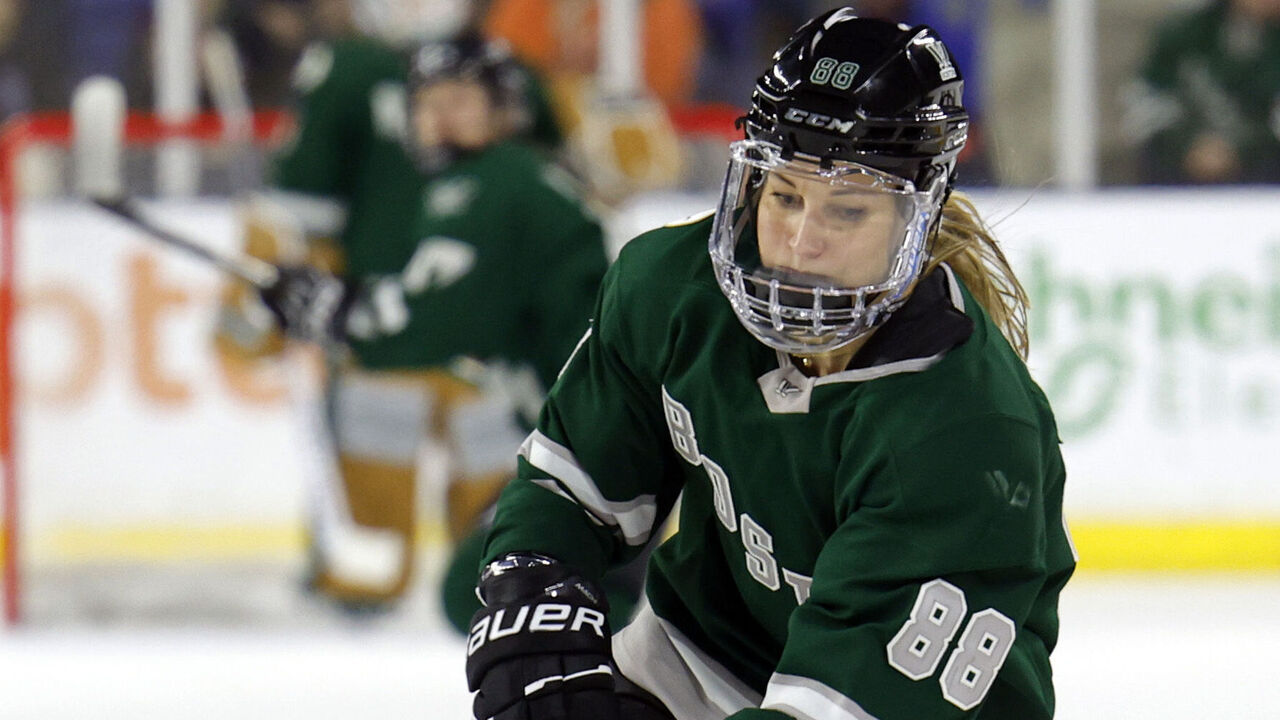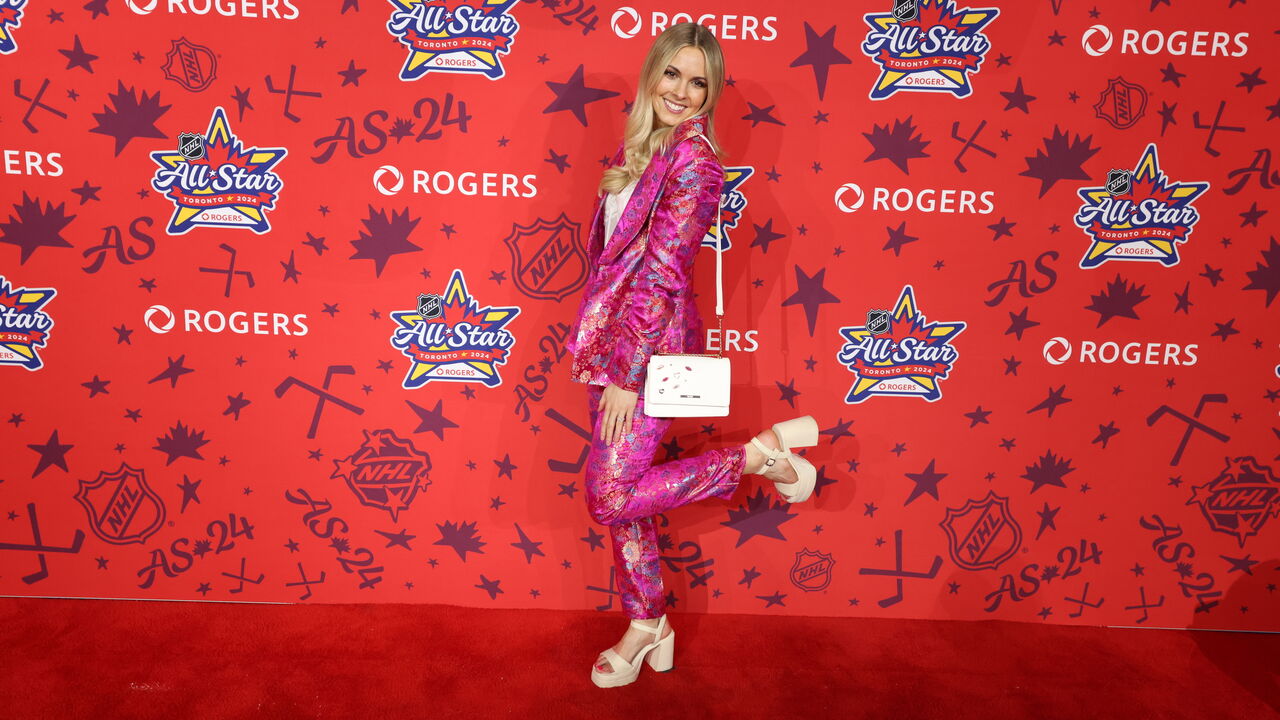Cages vs. visors: How the players view the issues, debate
You wouldn't think a piece of sporting equipment would be capable of causing such a fuss, especially the lowly hockey cage, a device amounting to a few crisscrossing metal bars serving the honorable duty of protecting a player's orbital bones, sinuses, jaw, and teeth, among other things.
Many hockey players don't wear a cage. Whether that's a sign of toughness, tradition, or stupidity is up to you. On the men's side - apart from NCAA hockey, which has mandated its use since 1978 - cages are usually replaced with visors in junior hockey and never reappear.
But it's different on the women's side. Even at the highest levels of the sport - the Olympics and the PWHL - women are required to wear full face protection, either in the form of a cage or an all-encompassing visor. Some think the rule is patronizing and others believe it limits the sport's marketability. Some argue real hockey can only be measured by facial scars and dental bills. Others have no problem with the mandate.
In the PWHL, the rule hasn't stopped fans from coming out in droves: 19,285 turned out to watch Toronto take on Montreal in February at Scotiabank Arena, and a similar matchup scheduled to take place at the Bell Centre in April sold out all 21,000 seats in minutes. It'll mark the sixth NHL venue to host a PWHL game this season with record-setting attendance.
But the issue of visors vs. cages does figure in the outside conversation around the sport - sometimes as a genuine question from fans, and other times as a debate flashpoint. The question was even posed to Toronto's Sarah Nurse on the popular hockey podcast "Spittin' Chiclets" in February. A clip of her answer posted to the podcast's Instagram account garnered more than 1.4 million views, making it among the podcast's most-viewed snippets on the platform. The TikTok version has more than 50,000 likes:
@spittinchiclets Will we ever see visors in the PWHL??
♬ original sound - Spittin Chiclets
"I have a pretty beautiful face," Nurse said in the interview. "I just got dental insurance this year. I don't want to be stuck in the face."
A glance at more than 700 comments on the Instagram post showed a majority of the Chiclets faithful seemed to think: fair enough. That said, Nurse is one player in a league of 156. The new league loosened established rules around hitting. Could it take another step to move into line with the men's professional game? What do other players think about mandated full-face protection, and would others in the league be open to making the switch?
Limited appetite for visors
For a lot of PWHLers, outside chatter about cages has been surprising. "I guess, in the women's game, it's not really something that's ever been brought up," PWHL Toronto's Hannah Miller said. "You go to college, men and women both wear cages or full masks there. And then, for us, at the international level, it's the same thing. So this is kind of new. This is the first legitimate pro league for us in North America. The only time you hear about it is in the comments or when fans bring it up."
Like Nurse, most players in the PWHL seem to like their faces.
"I personally have never considered wearing a visor, because my parents paid a lot of money for my braces," Montreal's Maureen Murphy said.
"I feel women care a lot about the aesthetic of their face so I don't see that change coming in the PWHL," New York's Alex LaBelle wrote in an email.
"I like to not have too much damage to my face," Minnesota's Grace Zumwinkle said.
Miller doesn't think a lack of enthusiasm for facial injuries is exclusively a woman's thing, either. "I think the guys aren't too happy when that kind of stuff happens but it's just been a part of their game for so long that that discussion doesn't really come up," she said.

It's not that PWHL players don't understand that prominently featuring players' faces could make for a better fan experience. "I do think from a marketing standpoint, it's nice to be able to see someone's face," Murphy said. "I've been considering using a fishbowl."
But as for half visors: "I think a lot of girls would be really reluctant to even try one," she said. The reasons are twofold.
"A lot of injuries would happen with high-stickings, accidentally," said Minnesota's Abby Boreen. "You don't mean to hit someone in the face but it does happen." Those injuries not only result in scars but require expensive repairs. Research has shown the risk of dental injury is 9.9 times higher when wearing a visor compared to full-face protection, and dental injuries are the costliest to fix. When dental trauma does occur, it costs about three times as much as non-dental hockey injuries.
Because female hockey players have never had to worry about injuring an opponent's face, careless stick use is more common throughout all levels of women's hockey.
"The women's game doesn't allow visors at any level, so transitioning at the professional level would be difficult," Toronto's Samantha Cogan said via email. "Players would need to learn how to control their sticks and protect their faces properly."
The other reason behind the reluctance to switch to visors isn't too different from the habits of other professional athletes of the world: equipment changes of any kind are generally met with resistance. "A lot of girls love their old equipment - they actually have gear from high school that they refuse to change," Murphy said. LaBelle said she's been using a cage since she was four years old and doesn't want to mess with a good thing. Boreen said all but the same thing: "I'm just so used to having a cage that I think it'd be very odd."
Still, it's not entirely out of the question for some athletes. "I wouldn't be opposed to it," Miller said. "But there's a lot of things that I think go into that, in terms of having medical and severe dental coverage, and I guess more medical (equipment) on site for potentially getting pucks and sticks in the face."

Players can't currently opt out of full-face coverage, but some imagine a world where the choice is theirs. "I don't think the league would ever make it mandatory for the players to wear a visor, but I could see the league making it an option in the future for players that want to wear them," said Cogan, even though she admitted "the benefits probably don't outweigh the negatives."
"I personally feel more comfortable in a cage since I've been wearing one my whole life. The idea of taking a puck or skate to the face isn't worth the risk to me," she said. "At the end of the day, player safety is extremely important - the safer players are, the more we mitigate injuries, the more players will stay in the lineup. It would be unfortunate for a player to get injured from wearing a visor - even for the fans, they want to see the players on the ice, not in the hospitals. I think going to visors would be taking a step back for safety."
A question of marketability
While the drawbacks of wearing a visor are well-documented, the benefits are somewhat less clear. "I would like to know - other than fans saying, 'Why aren't you guys wearing visors, because that's what the men in the NHL do, or males at the pro level do' - what would be the reasoning or their perspective on why they would want us to wear visors?" Miller said. "Is it creating a better experience for them in any way?"
Of all the arguments in favor of swapping cages for visors, the one that seems to be most valid for PWHL athletes is the assumption that fans can relate more to players whose faces they can actually see on the ice.
"I totally get that," Miller said. "We discussed that a little bit. I think one thing is maybe having more players wear a bubble instead of a cage. I have actually been thinking about switching back to a bubble."
The issue with bubbles usually comes down to reduced visibility, trapped heat and humidity, and the additional work to look after it.

Miller said she'd deal with those inconveniences if wearing a bubble could help develop a further connection with fans, and she thinks a lot of people in the league would too. "I think if that's something that's going to help the fans build that relationship or feel like they're able to see our faces more on the ice, then I think that's something that everyone would be totally open to doing."
But that may not be necessary. Hockey fans have long been enamored with players whose faces they can't see - NHL goalies have worn masks on the ice since 1959. Fan favorites like Curtis Joseph, Martin Brodeur, and Patrick Roy have all established enduring connections with fans despite spending their careers behind a mask. They made their presence known through their on-ice exploits, and off-ice interviews and interactions with fans.
Ottawa goalie and Canadian national team member Emerance Maschmeyer is no different. She's shown her vivacious personality through social media and fashion, drawing a diehard group of fans. Her bright pink silk suit and confident red carpet pose at the NHL All-Star Game captured what her fans love most about her:

"I have two sides to me," she said. "There's the hockey side where, in ways, you kind of want to blend in, it's kind of one big unit. I have that side of me on the ice. Then, off the ice, I like to have my own unique touch and be able to express myself through my outfits."
Creating those touchpoints has translated into increased fan engagement for Maschmeyer. "I've been really enjoying, even on my social media, being able to connect with the fans. You know, of course with hockey but also through my style and just different lifestyle posts. I think that's one side of our game that fans really enjoy - to get to connect with some of the personal side."
As a goalie, Maschmeyer will never have the option to show her face on the ice, and that's fine by her. "People get to know us away from the game and our faces away from the game. We're pretty accessible. We love reaching out to fans and interacting," she said. "If that's the reason for visors - just so people can see your faces - I don't think it's super necessary."
Jolene Latimer is a features writer for theScore.
HEADLINES
- Trade grades: Wild instantly become Cup contenders, Canucks score quantity
- Bedard injured in final second vs. Blues on 'freak accident'
- Canucks GM: Hughes trade not because of a culture problem
- Embiid drops season-high 39, leads 76ers past Pacers with Maxey out
- Pistons match NBA record for scoring balance in big win over Hawks